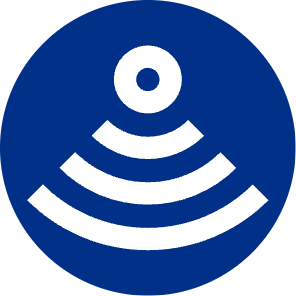NOAA OER Deepwater Exploration Mapping Procedures Manual: NOAA Office of Ocean Exploration and Research
Download the current version of the NOAA OER Deepwater Exploration Mapping Procedures Manual (pdf, 2.1 MB).
With less than 20% of our world ocean’s seafloor mapped to modern standards, seafloor mapping is a national and international priority. As emphasized by the U.S. National Strategy for Mapping, Exploring, and Characterizing the United States Exclusive Economic Zone and Seabed 2030 , the monumental task of mapping the seafloor requires a collective, coordinated, and collaborative approach.
For more than 10 years, the NOAA Office of Ocean Exploration and Research (OER) has been conducting exploratory mapping operations throughout U.S. waters and in other parts of the world’s ocean aboard NOAA Ship Okeanos Explorer. Based on this experience, OER produced a manual that describes the office’s approach to deepwater ocean exploration acoustic mapping.
The comprehensive manual describes methodologies for data acquisition, processing, reporting, and archiving for ship-based exploratory ocean mapping operations deeper than 200 meters (656 feet). In the context of the U.S. national strategy and Seabed 2030, OER is sharing this manual as a contribution to broader efforts to develop standard ocean mapping protocols and to serve as a guide for other interested public and private entities conducting deepwater mapping and exploration.
Principles of Exploration
The manual also details the principles of exploration that underlie OER’s mapping operations. These principles are:

Always collect data — Data are continuously collected anytime the ship is underway, including during transits and when operating in areas that have been previously mapped. If an area already has high-quality bathymetric coverage, collection of other data types, such as repeat bathymetry for temporal comparison, strategic sub-bottom profiling, or targeted water column backscatter, may be prioritized.

Systematically maximize coverage — Operations are strategically designed to maximize the collective coverage of acoustic data. This entails prioritizing areas where data have not been previously collected and building on existing data, including edge-matching transit data where practical. This requires consulting publicly available bathymetric data.

Collect useful and quality data — Data of the highest achievable quality are collected to be useful across multiple applications by performing annual calibrations, applying correctors for deepwater environments (such as sound speed), maximizing sounding density, and minimizing interference. OER ensures that there are always trained watchstanders operating the systems during all cruises, including transits, to consistently collect, organize, and document high-quality data.

Produce useful products — Secondary products are provided in multiple standardized formats, with a focus on those that can be used with nonproprietary software.

Report necessary metadata — All metadata necessary for effectively using the data are reported, archived, and easily discoverable.

Release in a timely manner — The raw data, derived products, metadata, and associated reports are generally publicly released within 90 days of a cruise. Data archiving is intended to maximize discoverability and accessibility. Digital records of data collected during expeditions on Okeanos Explorer are archived by NOAA’s National Centers for Environmental Information (NCEI) and available through the NOAA Ocean Exploration Data Atlas and NOAA Ship Okeanos Explorer data landing pages.
This manual will be reviewed annually and updated as needed based on changes in technology or methodologies. Download the current version of the NOAA OER Deepwater Exploration Mapping Procedures Manual (pdf, 2.1 MB).
Hoy, S., Lobecker, E., Candio, S., Sowers, D., Froelich, G., Jerram, K., Medley, R., Malik, M., Copeland, A., Cantwell, K., Wilkins, C., and Maxon, A. (2020). NOAA OER Deepwater Exploration Mapping Procedures Manual. Office of Ocean Exploration and Research, Office of Oceanic and Atmospheric Research, NOAA, Silver Spring, MD 20910.
